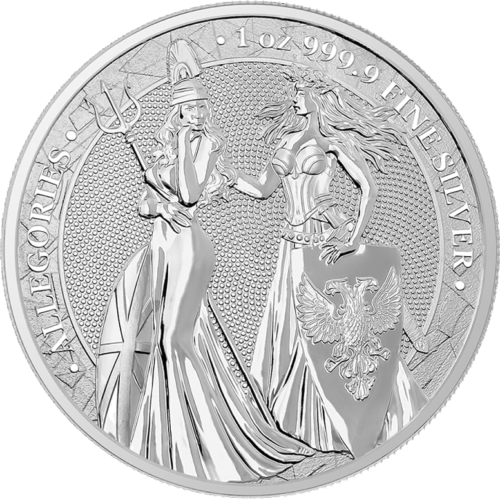



Reverse: the reverse of the coin represents two historical figures - Britannia and Germania. Germania's portrait depicts a woman with a laurel crown on her head and a shield depicting a double-headed eagle. This eagle symbolizes Janus, the god of Roman mythology, who is the patron saint of bridges, gates, treaties and alliances. The woman's sword is safety placed in the sword holster and the outstretched hand represents peace to Britain. Britain wears a Roman helmet, wearing a dress and a Neptune wand in hand, which indicates the power of the sea. The meaning of these two symbols can be seen both in historical context and in today's events. The name of the coin, "Allegory", it is made of pure silver.
Obverse: this coin exemplifies moral principles. The oak leaf wreath on the sides of the coin symbolizes loyalty, stability and unity of the nation. The coin has a shield with a crown on top. It is a symbol of authority, nobility, knighthood. The coat of arms is divided into four parts and each part has a different meaning. In the upper left is a double-headed eagle that represents Janus, the god of Roman mythology (patron of bridges, treaties and alliance). Opposite pointed eagle heads symbolize the past and the future. In the upper right corner is a checkered pattern that shows wisdom and prudence. There are three flowers in the lower left corner of the panel. They represent a strong and independent nation. In the bottom right corner is a boar. A highly respected animal in the Roman Empire, a symbol of power and strength.